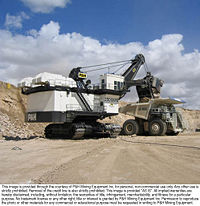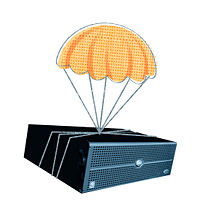Home
From Wikibon
| Line 35: | Line 35: | ||
</p> | </p> | ||
[[Planning a green storage initiative | read more...]] | [[Planning a green storage initiative | read more...]] | ||
| - | |}[[Category:Backup and restore]]<br />[[Category: Blade computing]]<br />[[Category: Business compliance]]<br />[[Category: Clustered storage]]<br />[[Category: DMX]]<br />[[Category: Data classification]]<br />[[Category: Data deduplication]]<br />[[Category: Disaster recovery]]<br />[[Category: ECM]]<br />[[Category: EMC]]<br />[[Category: Email archiving]]<br />[[Category: Email storage]]<br />[[Category: Enterprise mobile wikitips]]<br />[[Category: Green storage]]<br />[[Category: Hitachi]]<br />[[Category: IBM]]<br />[[Category: Managing storage]]<br />[[Category: Mobile Enterprise Wikitips]]<br />[[Category: NAND]]<br />[[Category: SSD]]<br />[[Category: STEC inc]]<br />[[Category: Storage and business compliance]]<br />[[Category: Storage asset management]]<br />[[Category: Storage consolidation]]<br />[[Category: Storage design]]<br />[[Category: Storage disaster recovery]]<br />[[Category: Storage services]]<br />[[Category: Storage vendor management]]<br />[[Category: Storage virtualization]]<br />[[Category: WEB2.0]]<br />[[Category: Wikitips]] | + | |}[[Category:Backup and restore]]<br />[[Category: Blade computing]]<br />[[Category: Business compliance]]<br />[[Category: Clustered storage]]<br />[[Category: DMX]]<br />[[Category: Data classification]]<br />[[Category: Data deduplication]]<br />[[Category: Disaster recovery]]<br />[[Category: ECM]]<br />[[Category: EMC]]<br />[[Category: Email archiving]]<br />[[Category: Email storage]]<br />[[Category: Enterprise mobile wikitips]]<br />[[Category: Green storage]]<br />[[Category: Hitachi]]<br />[[Category: IBM]]<br />[[Category: Managing storage]]<br />[[Category: Mobile Enterprise Wikitips]]<br />[[Category: NAND]]<br />[[Category: SSD]]<br />[[Category: STEC inc]]<br />[[Category: Storage and business compliance]]<br />[[Category: Storage asset management]]<br />[[Category: Storage consolidation]]<br />[[Category: Storage design]]<br />[[Category: Storage disaster recovery]]<br />[[Category: Storage services]]<br />[[Category: Storage vendor management]]<br />[[Category: Storage virtualization]]<br />[[Category: WEB2.0]]<br />[[Category: Wikitips]] |
Revision as of 21:51, 30 December 2008
Latest Peer Incites:
1. Six Wikibon experts break down EMC's recent analyst event (23 Mins)
2. Grant, a Sr. Storage Admin at a large bank discusses how heterogeneous storage virtualization can help reduce the budget for 2009. (20 Mins)
WikitipPortal:Data Protection
The Wikibon Data Protection Information Portal contains data protection industry research, articles, expert opinion, case studies, and data storage company profiles. Check out these Peer Incite Podcasts related to Data Protection: 1. Dave Vellante summarizes Eric Peterson of SaskEnergy's discussion about the organization's implementation of Tivoli Storage Manager (TSM) and an incremental forever backup strategy (8:36)
Action Item: Footnotes: |
Featured Case StudyFinancial giant goes greenThe corporate IT group of a very large, worldwide financial organization with 100,000 employees, has initiated an ongoing “greening” process. This is focused largely on reducing energy use both to decrease the corporation's carbon footprint while creating a net savings in operational costs over the lifetime of new, more energy-efficient equipment, including new storage systems. This effort is not viewed by the IT administration as a one-time project but rather as a perpetual process of evaluating new technology in part on its energy efficiency and introducing it into the corporate data centers to replace aging systems as appropriate. |
|
Featured How-To Note |
Planning a Green Storage InitiativeFluctuating energy prices have heightened electricity and energy consumption as a major issue within the technology community. IT is a significant consumer of energy and IT energy costs have been rising disproportionately because of continued investment in denser IT equipment. Estimates from the EPA and others indicate that IT will account for 3% of energy consumption by 2012. While technology changes have decreased footprint, power loading (amount of power required for a square foot of data center space) and heat load (the amount of heat that has to be removed from a square foot of data center space) have both escalated dramatically. The result is higher energy costs to provide power and extract heat from the data center, and lower utilization of data center floor space because of power and cooling limitations. The technology trends are toward higher heat and power loading, which will exacerbate the problem. | |||||||||||||||||||





